The Liberal Arts (Humanities and Social Science) Courses started in April 2016. The Independent Studies Courses provide knowledge to manage academic societies and associations. The Path-Breaking Liberal Arts Courses give opportunities to conduct joint research with students from different Schools and present results at a poster session.
The Independent Studies Courses 1Q this year, students learned communication skill and preparation of special lecture though group work lead by Daisuke Harada and Hironao Kaneko, Associate Professors, Institute for Liberal Arts. And Students learned the research ethics using the set of cards invented by Takehiro Inohara, Professor, Institute for Liberal Arts.
As a new project, students prepared and managed the series of lectures under the title of Succession of Technology and Culture as the Special Lecture of Tokyo Tech Liberal Arts Courses. This lecture focuses on technologies and special skills as the bases of Japanese Industry and Culture. Through preparation of the lectures, students learn how to prepare an international conference to send information about Japanese technology and traditional culture even if lecturer talks about special skills in Japanese.
First Special Lecture, "Succession of Technology and Culture: Traditional Technique for Restoration of Cultural Assets"
On April 28 (Saturday) 2018, at West-9 Building Ookayama (Digital Multi-Purpose Hall)
The lecturer was Mr. Noritake Sato, the managing technicians of Urushi (Japanese Lacquer extracted from Urushi trees) paint, Nikko Cultural Assets Association for the Preservation of Shrines and Temples. He told about restoring the historic buildings by Urushi paint. He has engaged in the restoration about one hundreds buildings assigned by the Japanese government in Nikko. NHK TV program featured his restoration work, Professionals: Lacquer Is My Life, Noritake Sato, Lacquerer, broadcast by NHK on 5th February 2018 and by NHK World Wide on 6th May 2018.
As opening of the lecture, the instructor, Kaneko, told about the purpose of these courses. After this, students chaired the special lecture. Audience received English material prepared by the instructor before the lecture. Mr. Noritake Sato took a presentation in Japanese about Urushi (Japanese lacquer) painting. The instructor tried to insert English translation of key phrases shown in presentation slides into Mr. Sato's to help understanding in English.
Mr. Sato told about the history and culture of temples and shrines in Nikko. He told about the special skill of restoration using Urushi paint, the importance of restoration using Japanese genuine Urushi and the training program for specialist of Urushi paint to succeed the technique. Chair students tried English interpretation at Question and Answer session.
Besides the lecture, audiences watched tools used for Urushi paint as an exhibition.
Vice President Junichi Imura, Vice President Masaru Kajiwara, Noriyuki Ueda, Dean of Institute for Liberal Arts came to the special lecture.
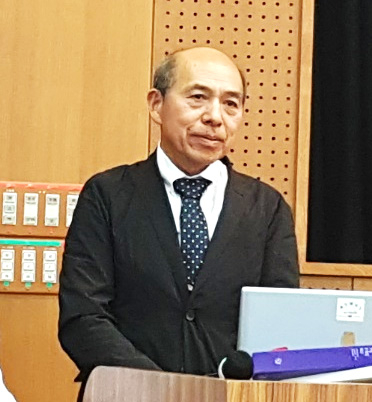
Mr. Noritake Sato
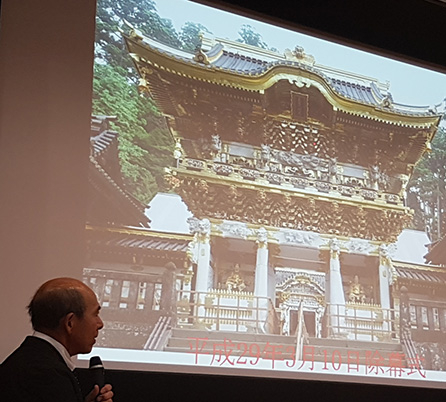
Yomeimon Gate at Nikko's Toshogu Shrine after restoration
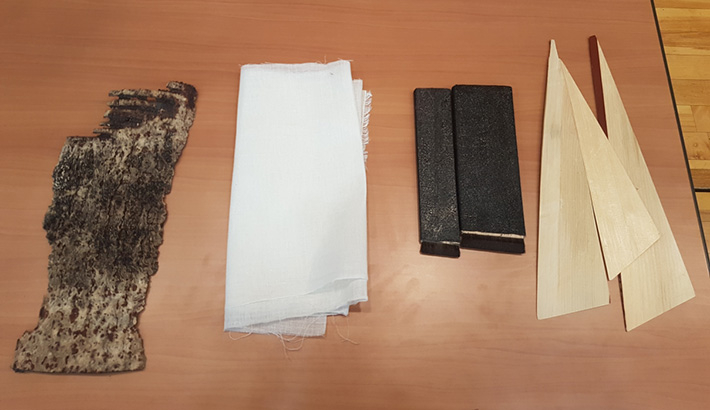
Tools for urushi painting: (From right) bamboo scraper, urushi brush, hemp cloth, and a particle from an old paint layer
Second Special Lecture, "Succession of Technology and Culture: Kisage basic technique for precision machine production."
On June 2 (Saturday) 2018, at West-9 Building Ookayama (Digital Multi-Purpose Hall)
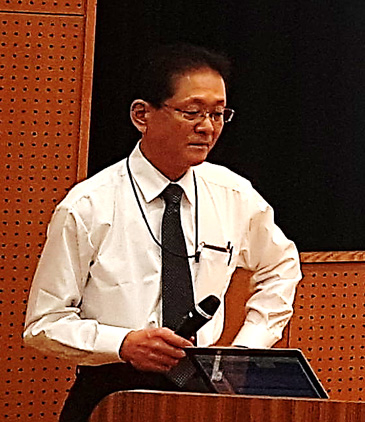
Mr. Kazuaki Ishibashi
The lecturer was Mr. Kazuaki Ishibashi, the Chief of Turning Center Basic Precision Section, DMG Mori Co. Ltd. He told about Kisage, the technique of scraping metal surface finishing. He was a Outstanding skills workers (master craftsmen) by his extraordinary skills of Kisage in 2014 and awarded, the Medal with Yellow Ribbon by the government in 2016.
For the second lecture, students prepared material for explaining the technique of metal finishing in English and delivered to audience. They also added English translation into the lecture in Japanese by Mr. Ishibashi periodically.
Kisage is the technique of scrape the touching or sliding surface of metal parts in 0.001mm using Kisage knife by hands to lessen friction by keeping smoothing oil with in two metal surfaces. It is essential to produce precision machines.
Mr. Ishibashi told about how the 5 axis machining center works. He told about Kisage tools improved to fit for Japanese craftsman's form, the training program for young engineers and technology succession using IOT. At last, He introduced the most innovative machine that pile molten metal up like 3D printer and milling at the same time. He stressed that these machine innovate idea of manufacturing because we can make parts that we cannot do ever before.
At Question and Answer session, Mr. Ishibashi told about scraping by hands needs precise almost same size as molecule of smoothing oil.
Besides the lecture, audiences watched exhibitions of metal parts finished by Kisage scrape. One of the samples was finished by the highest skilled Kisage, so called Mikaduki, a crescent shaped scrape.
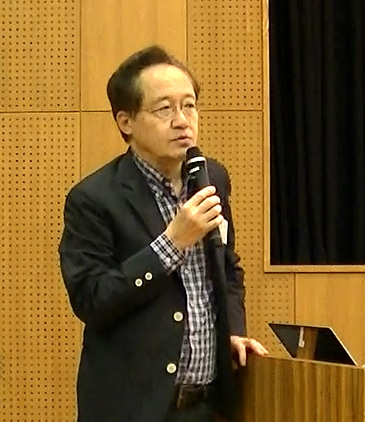
President Kazuya Masu
The President of Tokyo Tech, Kazuya Masu expressed general remarks summarized as follows. Mr. Ishibashi picked up important points for succeeding technology to young engineer, for example to awake their interest in the technology. University education is same.
Research in university should have social impact. We should educate students to devote to the society. The present research is too specialized. To perform innovative and creative research, we should remember three points; diversity, interdisciplinary and inheritance of traditional technology. By the educational reform in Tokyo Tech, all students, from undergraduate level to doctoral candidates, learn the Liberal Arts Courses. It provides good opportunity to learn diversity, interdisciplinary and inheritance of traditional technology. President Masu send audiences, both doctoral students and students of Tokyo Tech High School of Science and Technology, a message that studying variety of fields lead to success of research in the future.
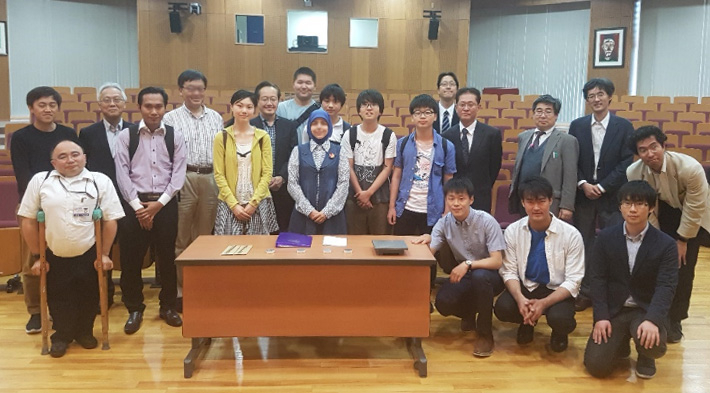
Group photo after the lecture
After the lecture, we took a photo of Mr. Ishibashi, president Masu with students of Tokyo Tech High School. As closing ceremony of the lecture, students and staffs take, All Shake Hands.
Executive Vice President Tetsuya Mizumoto, Auditor Kazumasa Enami, Vice President Junichi Imura, Vice President Hidetoshi Sekiguchi, Yuji Wada, Dean of School of Materials and Chemical Technology, Fumio Koyama, Director-General of Institute of Innovative Research, Noriyuki Ueda Dean of Institute for Liberal Arts also came to the special lecture.
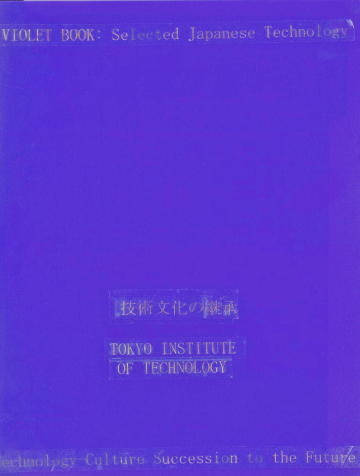
Cover page of Succession of Technology and Culture
In each special lecture materials digesting technology prepared by the staff of Liberal Arts Courses for doctoral students presented to the lecturer. The materials of next lectures will be edited and combined with the Violet Book on Japanese selected technology: Succession of Japanese Technology and Culture.
. Any information published on this site will be valid in relation to Science Tokyo.










